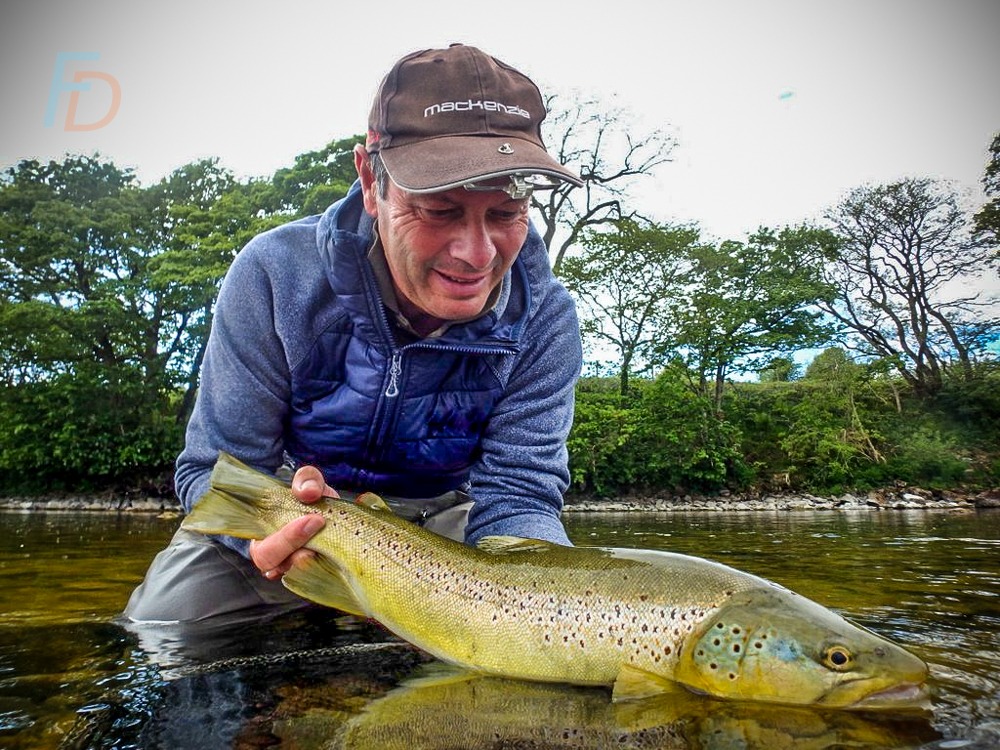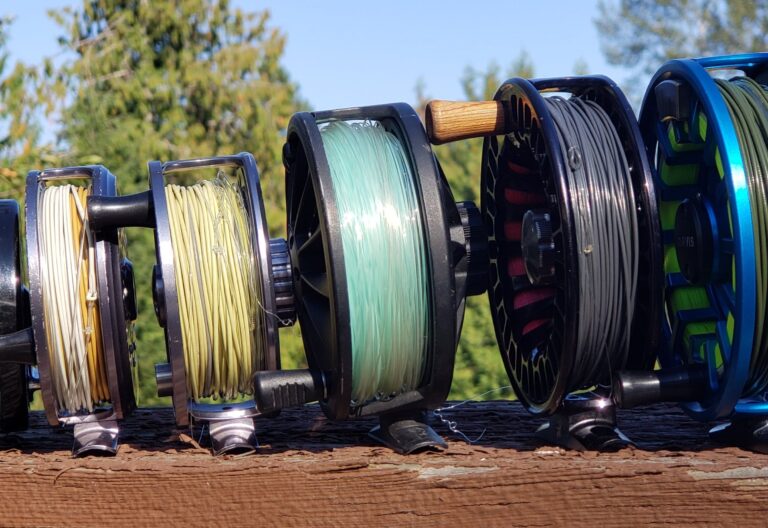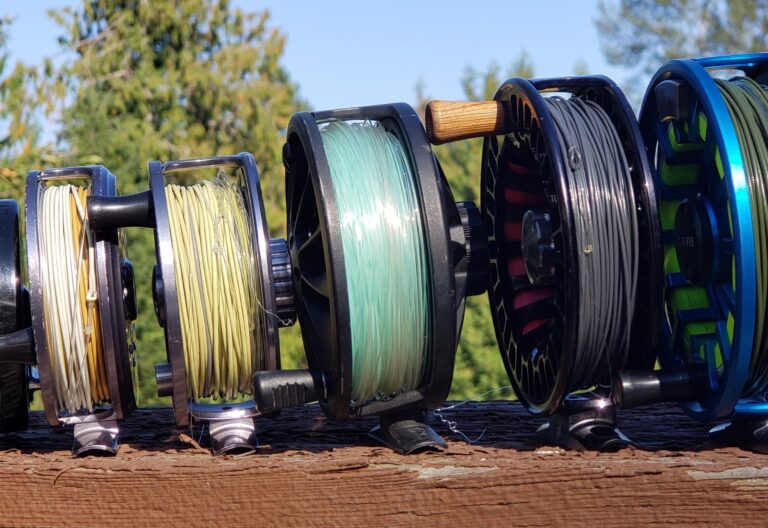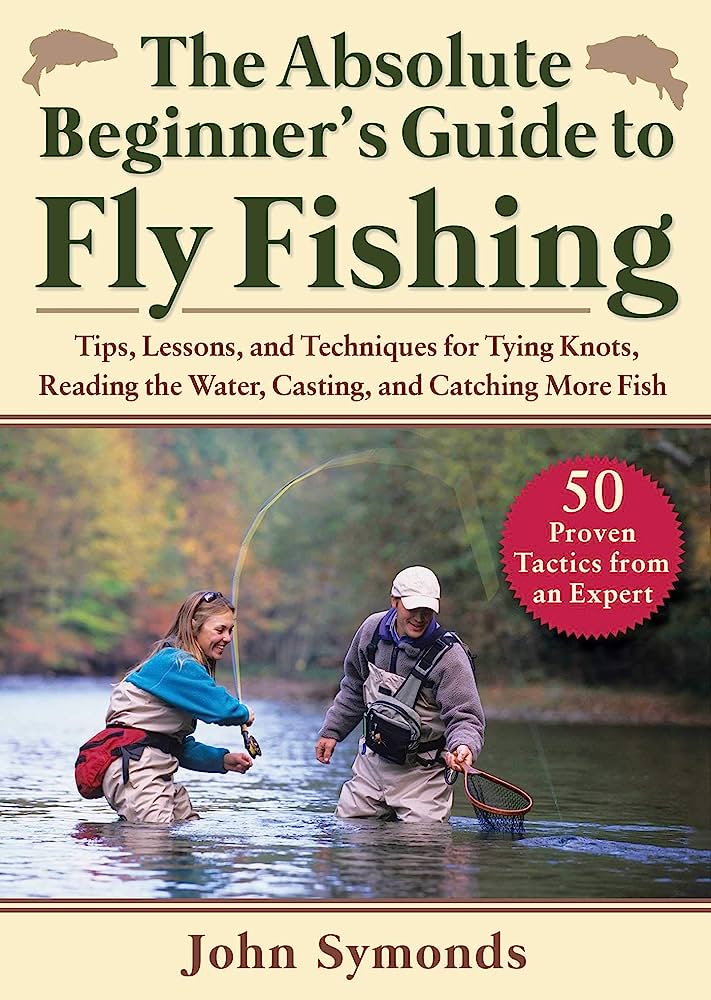Fly reels can get wet, but it is recommended to dry them thoroughly to prevent rust and damage. When fishing, fly reels are often exposed to water, and it is natural for them to get wet.
However, leaving them wet for prolonged periods can lead to rusting and potential damage to the reel’s components. To ensure the longevity of your fly reel, it is important to dry it thoroughly after each use. Simply wiping it down with a clean cloth and allowing it to air dry in a well-ventilated area should suffice.
By taking these simple precautions, you can maintain the performance and durability of your fly reel, ensuring it lasts for many seasons of successful fishing.

Credit: fishingdiscoveries.com
Understanding The Role Of Fly Reels In Fishing
Fly fishing is a popular angling method that requires specialized equipment to achieve optimal results. One crucial component in a fly fishing setup is the fly reel. This article will delve into the importance of fly reels in fly fishing, how they work, and the key components that make them essential for a successful angling experience.
Importance Of Fly Reels In Fly Fishing
- Fly reels are not merely a storage compartment for fly lines; they serve several crucial functions in fly fishing:
- They provide a means of storing and deploying fly lines, ensuring controlled casting and retrieval.
- They act as a counterbalance to the fly rod, maintaining proper balance and improving casting accuracy.
- They play a crucial role in landing and controlling fish by providing drag resistance when a fish takes the fly.
- They facilitate line retrieval, allowing anglers to quickly bring in excess slack and maintain tension during a fight.
- They offer a platform for attaching backing, which provides extra line capacity and acts as insurance against hooked fish running long distances.
How Fly Reels Work
- Fly reels operate using a simple mechanism that consists of the following elements:
- Fly line: The line is wound around the reel’s spool and is responsible for casting the fly.
- Arbor: The central spindle around which the line is wound. This component determines the reel’s line retrieval rate.
- Drag system: The drag system controls the amount of resistance the angler encounters when reeling in a fish.
- Disc drag: The most common drag system, it utilizes a stack of frictional discs to control line tension.
- Click and pawl drag: A traditional drag system that generates a clicking sound when the fish pulls line.
- Handle: The handle is used to manually retrieve the line and plays a role in controlling the fish during a fight.
- Frame: The frame provides structural support and houses all the components of the reel.
Key Components Of A Fly Reel
- When examining a fly reel, it is important to understand the key components that contribute to its performance:
- Material: Reel materials range from durable lightweight alloys to high-grade machined metals, ensuring strength and corrosion resistance.
- Arbor size: The arbor size affects the line retrieval rate. Large arbor reels retrieve line more quickly, reducing line coiling and improving casting efficiency.
- Drag system: The drag system is responsible for controlling line tension during a fish fight. A smooth and adjustable drag allows for precise control and protects delicate tippets from breaking.
- Ergonomics: The overall design and ergonomics of the reel impact ease of use and comfort during prolonged casting and fishing sessions.
- Weight: A lightweight reel enables fatigue-free casting and reduces overall strain on the angler, especially during long days on the water.
- Noise: Click and pawl drag systems produce a unique clicking sound, adding to the aesthetic appeal and nostalgia of traditional fly fishing.
Understanding the role of fly reels in fly fishing is crucial for selecting the right equipment and optimizing your fishing experience. By considering the importance of fly reels, how they work, and their key components, you’ll be well-equipped to make informed decisions that enhance your angling prowess.
Happy fishing!
The Impact Of Water Exposure On Fly Reels
Exploring The Effects Of Water Exposure On Fly Reels
When heading out for a day of fly fishing, it’s crucial to ensure that your gear is up to the task. The fly reel, being a key component of your setup, is often subject to water exposure. But just how does water affect fly reels?
Let’s dive in and explore the impact of water exposure on these essential fishing tools.
Corrosion And Rust: The Primary Concern
Water exposure can lead to various issues for fly reels, but perhaps the most significant concern is corrosion and rust. Here’s what you need to know:
- Corrosion: Water exposure introduces the risk of corrosion on the metal parts of a fly reel. This can affect its functionality and longevity.
- Rust: When water interacts with the exposed metal surfaces of a reel, rust can begin to form. Rust can impair the smooth rotation of the reel’s components and compromise its overall performance.
Factors That Contribute To Corrosion
Several factors contribute to the corrosion of fly reels when exposed to water. These include:
- Salinity: Saltwater environments accelerate the corrosion process due to the corrosive nature of salt. Rinse your reel thoroughly with freshwater after saltwater fishing to minimize salt build-up.
- Moisture: Leaving your fly reel wet for extended periods promotes corrosion. Ensure you dry it thoroughly after each use to prevent moisture from lingering on the metal parts.
- Inadequate maintenance: Neglecting regular cleaning and maintenance can increase the chances of corrosion. Clean dirt, debris, and contaminants that accumulate on your reel to prevent corrosion from setting in.
While water exposure is inevitable during fly fishing outings, understanding the effects it can have on fly reels is essential. By taking proactive steps to prevent and mitigate corrosion, you can ensure the longevity and optimal performance of your fly reel.
Evaluating The Water Resistance Of Fly Reels
When it comes to fly fishing, one essential piece of equipment that every angler must consider is the fly reel. It not only holds the fly line but also plays a crucial role in landing that trophy fish. But how do you know if your fly reel can handle being in contact with water?
In this section, we will explore the different aspects of water resistance in fly reels and what you need to know before making a purchasing decision.
Differentiating Between Water-Resistant And Waterproof Reels
Understanding the distinction between water-resistant and waterproof reels is important when evaluating a fly reel’s water resistance. Here are the key points to consider:
- Water-resistant reels: These reels are designed to repel water to a certain extent but are not completely impervious to it. They can withstand splashes and light rain but may not hold up well when submerged in water for an extended period of time.
- Waterproof reels: Unlike water-resistant reels, these reels are specifically designed to keep water out, providing a higher level of protection. They are ideal for anglers who regularly find themselves fishing in wet conditions or in saltwater environments.
Examining Fly Reel Materials And Their Resistance To Water
The materials used in a fly reel can have a significant impact on its resistance to water. Consider the following points:
- Aluminum fly reels: These reels are known for their corrosion resistance and durability, making them a popular choice among anglers. However, they are not completely impervious to water and may require regular maintenance to prevent any potential damage.
- Composite fly reels: These reels are often made from materials like graphite or carbon fiber, offering good water resistance. They are lightweight and less prone to corrosion but may not be as durable as aluminum reels.
Understanding Ipx Ratings For Fly Reels
Ipx ratings are commonly used to determine the level of water resistance in various electronic devices and equipment, including fly reels. Here’s what you need to know about ipx ratings:
- Ipx1 to ipx4: Reels with these ratings can withstand splashes and light rain but may not provide sufficient protection when fully immersed in water.
- Ipx5 to ipx7: Reels with these ratings offer increased protection against water, making them suitable for fishing in heavy rain or shallow water.
- Ipx8: Reels with this rating are fully submersible and can handle being submerged in deeper water for extended periods of time.
Evaluating the water resistance of fly reels is crucial for anglers who want to ensure the longevity and performance of their fishing gear. Understanding the differences between water-resistant and waterproof reels, examining the materials used, and considering the ipx ratings will help you make an informed decision when choosing the right fly reel for your fishing needs.
So, before your next fishing adventure, make sure your fly reel can handle getting wet.
Proper Maintenance And Care For Fly Reels
Fly reels are an essential tool for anglers, but they are not immune to the wear and tear of fishing adventures. To ensure that your fly reel performs optimally and lasts for years to come, proper maintenance and care are crucial.
In this section, we will explore cleaning and drying techniques, lubrication and protection against corrosion, and storing fly reels to prevent water damage.
Cleaning And Drying Techniques For Fly Reels:
Keeping your fly reel clean and dry is vital to maintain its functionality and prevent rust or corrosion buildup. Here are some key points to remember:
- After each fishing session, remove the fly line and backing from the reel.
- Use a soft cloth or brush to remove any dirt, grime, or debris from the reel.
- For tougher dirt or saltwater residue, rinse the reel with freshwater. Avoid using harsh chemicals that could damage the reel’s components.
- Dry the reel thoroughly using a soft cloth or towel. Ensure no moisture remains in the crevices or components.
Lubrication And Protection Against Corrosion:
Applying lubrication to your fly reel not only enhances its performance but also protects it against corrosion. Here are some tips to keep in mind:
- Use a suitable lubricant recommended by the reel manufacturer. Applying the wrong type of lubricant can damage the reel.
- Apply a small amount of lubricant to the reel’s moving parts, such as the spool shaft, handle, gears, and drag system.
- Distribute the lubricant evenly, ensuring it reaches all necessary areas.
- Wipe off any excess lubricant to prevent accumulation of dirt or debris.
To protect your fly reel against corrosion, especially if you fish in saltwater environments:
- Consider using a protective corrosion inhibitor spray or reel oil specifically designed for saltwater use.
- Apply the corrosion inhibitor or reel oil to all metal parts of the reel, paying close attention to the areas prone to corrosion.
- Regularly check for signs of corrosion and promptly address any issues.
Storing Fly Reels To Prevent Water Damage:
Proper storage of your fly reel is essential to maintain its quality and protect it from water damage. Here are some guidelines to follow:
- Before storing your fly reel, ensure it is clean and dry.
- Store the reel in a protective case or bag to shield it from moisture, dust, and other potential hazards.
- Avoid storing the reel in extreme temperatures or direct sunlight, as these conditions can cause damage or deterioration.
- Check the reel periodically during storage to identify and address any signs of corrosion or damage.
By following these maintenance and care techniques, you can extend the lifespan of your fly reel and ensure its consistent performance on every fishing trip. Remember, a well-maintained fly reel not only enhances your angling experience but also protects your investment for years to come.
Debunking Common Myths About The Water Resistance Of Fly Reels
Fly fishing enthusiasts often wonder about the water resistance of fly reels. Can fly reels get wet? Are they completely waterproof? In this section, we will address some common misconceptions and provide expert opinions on the limits of water exposure for fly reels.
Myth: Fly Reels Are Completely Waterproof
Contrary to popular belief, fly reels are not completely waterproof. While they are designed to withstand exposure to water, they have their limits. Here are the key points to consider:
- Fly reels are built with sealed drag systems and corrosion-resistant materials to ensure durability in wet conditions.
- The level of water resistance will vary between different fly reel models and brands. It’s important to check the specifications provided by the manufacturer to understand the specific limits of water exposure for your reel.
- Submerging a fly reel in water for extended periods can lead to damage. While some reels may tolerate brief submersion, continuous exposure to water can affect its performance and lead to rust or corrosion.
- Water resistance is not the same as being waterproof. Water-resistant reels can withstand splashes, rain, and occasional brief submersion, but they are not designed to be fully submerged for long periods.
Expert opinions on the limits of water exposure for fly reels:
- Experts recommend avoiding submerging fly reels in water whenever possible. While some reels may handle it better than others, it’s always safer to limit their exposure to prolonged contact with water.
- Drying the reel thoroughly after each use, particularly if it has been exposed to water, is crucial to extend its lifespan and prevent potential damage.
- Regular maintenance, such as lubricating the reel and ensuring all components are clean and dry, is essential for the optimal performance and longevity of your fly reel.
Remember, even though fly reels have water-resistant features, they are not invincible to water damage. Taking necessary precautions and following the manufacturer’s guidelines on water exposure will help preserve the functionality of your fly reel and ensure it serves you well for many fishing adventures to come.
Selecting The Right Fly Reel For Water Resistance
When it comes to fly fishing, having a water-resistant fly reel is essential. Not only does it protect your gear from the elements, but it also ensures smooth operation and durability. With so many options available, it can be overwhelming to choose the right one for your needs.
Here are some factors to consider when selecting a water-resistant fly reel:
Factors To Consider When Choosing A Water-Resistant Fly Reel:
- Material: Look for reels made from corrosion-resistant materials such as aluminum or stainless steel. These materials are not only strong but also stand up well to exposure to water and salt.
- Sealed drag system: A sealed drag system prevents water, dirt, and debris from entering the reel and affecting its performance. This feature is especially important if you plan on fishing in challenging conditions or saltwater environments.
- Waterproof construction: Opt for a fly reel that has a fully waterproof construction. This means that the reel is sealed tightly to prevent any water from entering. Waterproof reels are better equipped to handle splashes, rain, or even accidental submersion.
- Size and weight: Consider the size and weight of the reel based on the type of fishing you’ll be doing. Smaller reels are suitable for lightweight fly rods and small fish, while larger reels are better for heavier rods and bigger species.
Budget-Friendly Options For Water-Resistant Fly Reels:
- Redington behemoth: This reel offers an affordable option without compromising on water resistance. It features a sealed drag system with a reliable composite construction.
- Piscifun sword: Known for its durability and water resistance, the piscifun sword is an excellent choice for budget-conscious anglers. It boasts a sealed drag system and a lightweight design.
- Okuma slv fly reel: This reel combines affordability with water resistance. It features a fully machined aluminum spool and frame, providing both strength and protection against the elements.
- Lamson liquid fly reel: The lamson liquid reel offers water resistance at an affordable price. It features a sealed conical drag system and a durable aluminum construction.
Recommendations From Experienced Anglers And Professionals:
- “i highly recommend the orvis hydros sl reel. It is incredibly water-resistant and has a smooth drag system that can handle even the toughest fish.” – john, professional angler
- “if you’re looking for a reliable and affordable water-resistant fly reel, the ross evolution r is hard to beat. It offers exceptional performance in all conditions.” – sarah, experienced angler
- “i’ve been using the waterworks-lamson guru for years, and it has never let me down. Its water-resistant design and solid construction make it a solid choice for any angler.” – mike, professional guide
Remember, when choosing a water-resistant fly reel, it’s important to prioritize durability and performance. By considering factors such as material, drag system, construction, and budget, you can find a reel that fits your needs and keeps your gear protected on the water.
So, make an informed decision and enjoy your fly fishing adventures without worrying about damaging your reel.
Conclusion
Fly reels can definitely get wet and are designed to withstand the conditions anglers may encounter during their fishing adventures. However, it is important to note that while fly reels are built to handle water, they still require proper maintenance and care to ensure their longevity.
Regular cleaning and drying after use, as well as occasional lubrication, will help prevent corrosion and keep the reel functioning smoothly. Additionally, it is important to choose a fly reel that is suitable for the type of fishing you plan to do and the specific conditions you may encounter.
So, whether you are casting in freshwater or saltwater, a properly maintained and suited fly reel will continue to perform at its best, allowing you to fully enjoy your fishing experience. Happy fishing!




